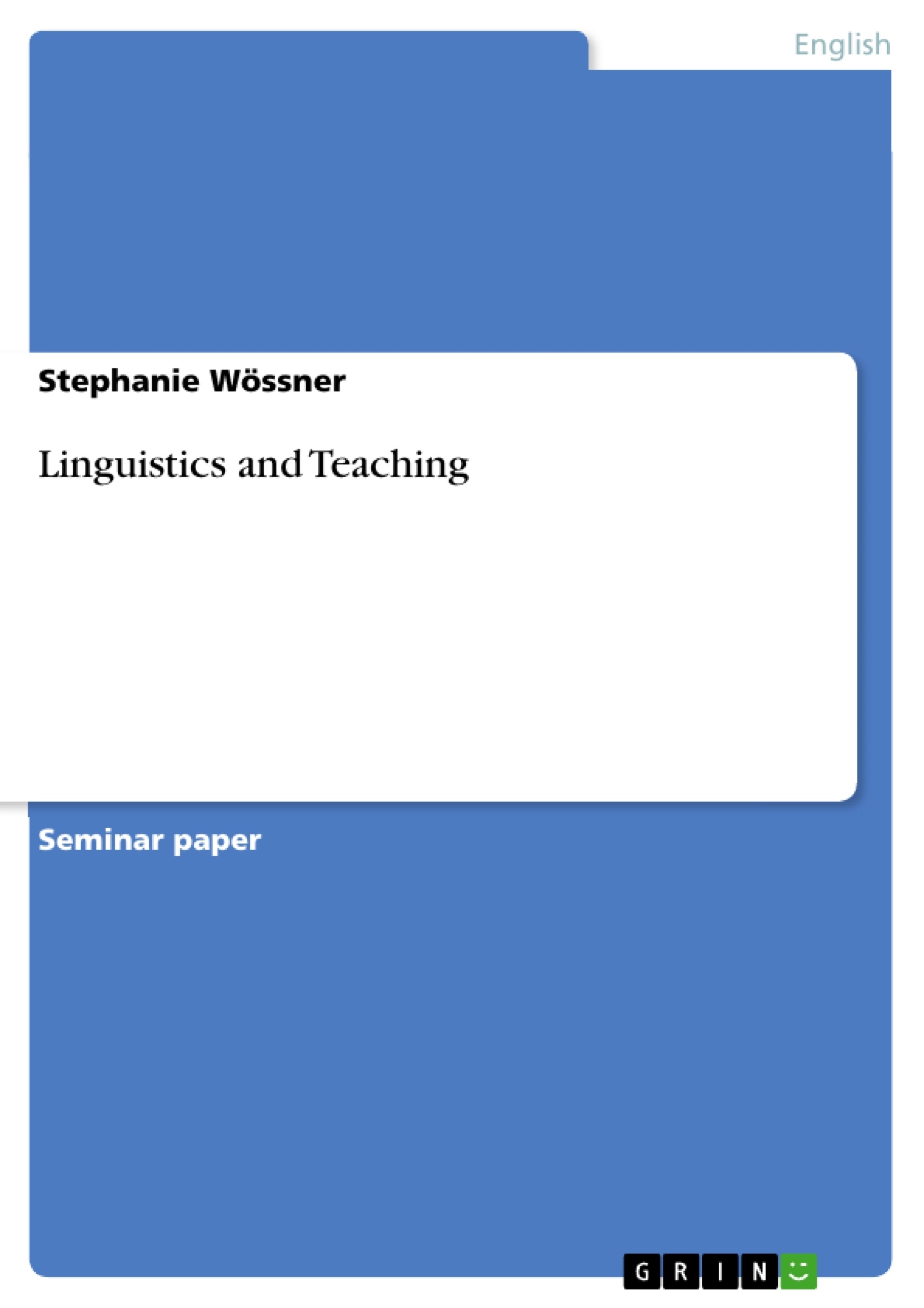“Grammar is what has always made English a school subject.” (Lewis,1993: iii) – Jimmie Hill´s opinion on English as a school subject is one of the simplest put but most accurate views I have ever come across so far. In this short phrase lies far more than one would imagine at first sight. Its explicit message is, of course, that grammar is a feature of great value for a student learning English and I would never contradict that. However, reading and thinking about this short sentence one comes to understand that there must be far more than that to really be able to communicate in English. In his list of principles Michael Lewis puts it as follows: “Successful language is a wider concept than accurate language.” (Lewis, 1993: vi)
That means that in order to communicate not only grammatical competence is required but that there are other factors which need to be considered when teaching English. A student learning a great amount of grammar will not be able to communicate in English if he isn´t, for instance, able to communicate at all, no matter if in his mother tongue or in the language he is newly acquiring because “socio – linguistic competence – communcative power – precedes and is the basis, not the product of grammatical competence.“ (Lewis, 1993: vii) As a consequence, a teacher of English (for Germans) can´t only teach grammar to his students and expect them to be able to fluently and correctly speak English but he or she (I will in the following stick to the masculine form only) is also obliged to keep in mind various long – term aims which cannot be checked on in the form of a test or an essay. Here arises the question about what a teacher of English might want to know about linguistics in order to provide students with the best conditions for successfully communicating in English especially outside the classroom situation. In which way and to what extent should a teacher make use of his linguistic knowledge though? Should students be made familiar with linguistic theories? Will it be sufficient if a teacher is aware of these theories and lets them slip into his teaching in class on a secondary basis? Or should he just forget about linguistics at all because it is too complicated a field to be used in teaching English to high school students?
Inhaltsverzeichnis (Table of Contents)
- INTRODUCTION
- GENERAL REFLECTIONS ABOUT LINGUISTICS IN CONNECTION WITH TEACHING.
- GRAMMAR
- PHONOLOGY
- THE SYLLABLE FINAL OBSTRUENT DEVOICING
- FEATURES PROPER TO A SPECIFIC LANGUAGE ONLY
- THE DIFFERENCE BETWEEN W AND V IN ENGLISH AND GERMAN.
- PHONETIC TRANSCRIPTION
- MORPHOLOGY
- WORD FORMATION IN ENGLISH
- WORD FORMATION IN GERMAN.....
- SYNTAX
- NEGATIVES AND QUESTIONS...........
- OTHER ASPECTS WORTH LOOKING AT ........
- PHONOLOGY
- BEYOND GRAMMAR: SEMANTICS AND PRAGMATICS
- CONNECTED Speech: Assimilation, SyllabiC CONSONANTS, WEAK FORMS AND STRONG FORMS
- VOCABULARY
- HOMONYMY AND SYNONYMY.
- "FALSE FRIENDS"
- WORD BY WORD - TRANSLATIONS
- VARIATIONS WITHIN ENGLISH.....
- CONVENTIONS.
Zielsetzung und Themenschwerpunkte (Objectives and Key Themes)
This text aims to explore the importance of incorporating linguistic knowledge into the teaching of English, particularly for German learners. It argues that while grammar is essential, successful communication in English requires a broader understanding of language beyond its grammatical structure.
- The role of linguistic theory in English language teaching
- The importance of sociolinguistic competence
- The need for a comparative approach to teaching English to German learners
- The significance of phonological, morphological, and syntactic features in English
- The challenges of vocabulary acquisition and understanding English pronunciation
Zusammenfassung der Kapitel (Chapter Summaries)
- Introduction: The text introduces the argument that successful English communication requires more than just grammatical competence. It highlights the need for sociolinguistic understanding and a broader perspective on language learning.
- General Reflections about Linguistics in Connection with Teaching: This chapter discusses the challenges and possibilities of integrating linguistics into the teaching of English. It explores the trade-off between teaching traditional English and incorporating linguistic principles, ultimately advocating for a balanced approach.
- Grammar: This chapter explores the significance of various grammatical areas, such as phonetics, phonology, morphology, and syntax, in supporting English language acquisition. It emphasizes the importance of addressing grammatical differences between German and English.
- Phonology: This section delves into specific phonological features, such as the Syllable Final Obstruent Devoicing, which can be challenging for German learners. It also highlights the importance of teaching pronunciation techniques and the difference between voiced and voiceless sounds.
- Morphology: This section focuses on word formation in English, emphasizing its role in expanding vocabulary and enabling communication. It stresses the need to teach students word-building tools and differences between German and English morphology.
Schlüsselwörter (Keywords)
The text focuses on key concepts such as linguistic competence, sociolinguistic competence, comparative language teaching, phonetics, phonology, morphology, syntax, word formation, and pronunciation. It highlights the challenges and strategies involved in teaching English to German learners, emphasizing the importance of considering both language structure and communication skills.
- Quote paper
- Stephanie Wössner (Author), 1999, Linguistics and Teaching, Munich, GRIN Verlag, https://www.hausarbeiten.de/document/1567


